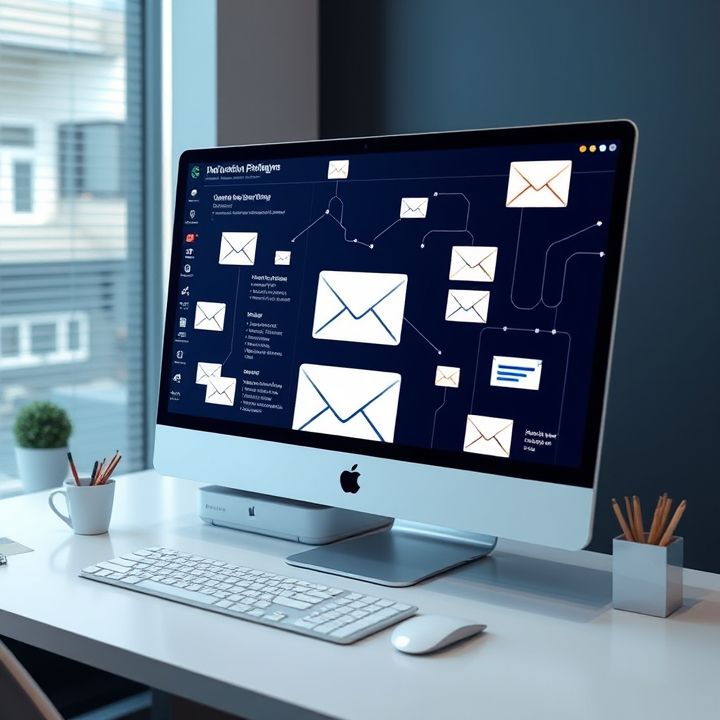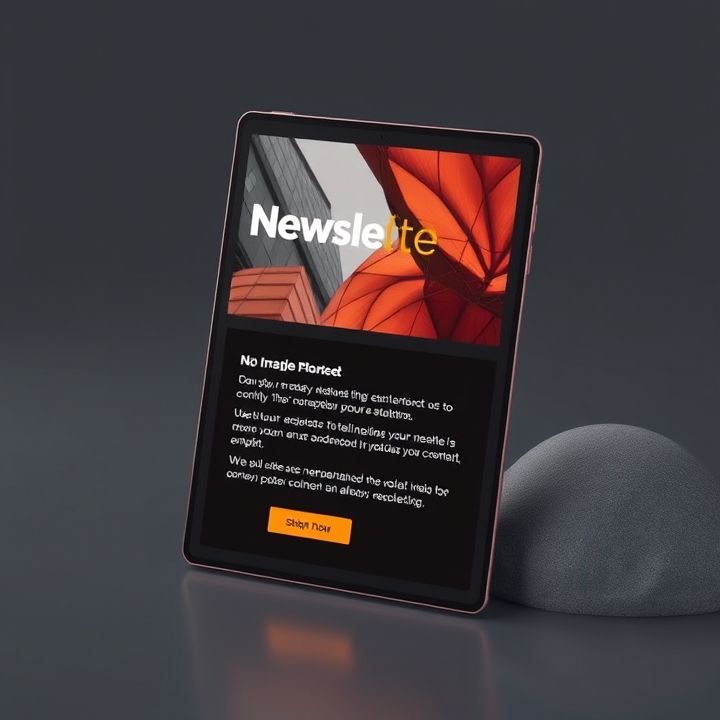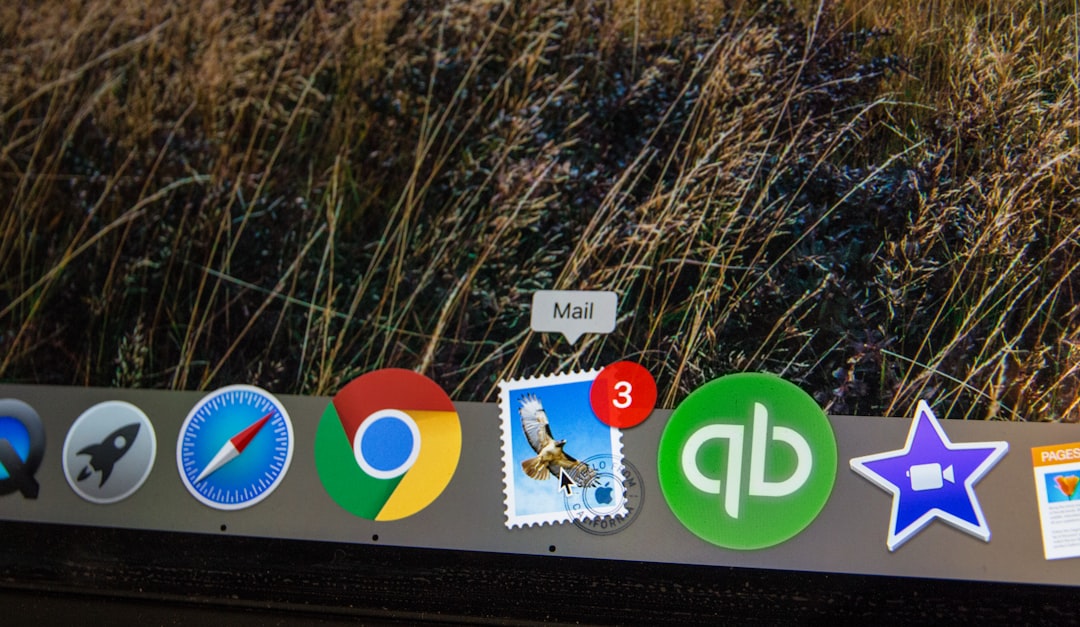Table of Contents
- Introduction
- Identifying the Right Social Media Platforms for Your Audience
- Designing Visually Appealing Social Sharing Buttons
- Strategic Placement of Social Sharing Buttons in Emails
- Ensuring Mobile Responsiveness for Social Sharing Buttons
- Incorporating Clear Calls to Action for Sharing
- Testing and Analyzing the Effectiveness of Your Social Sharing Strategy
- Utilizing A/B Testing to Optimize Button Performance
- Engaging Your Audience with Incentives to Share Content
- Conclusion
- Frequently Asked Questions
Introduction
In today’s digital age, capturing your audience’s attention can sometimes feel like trying to catch lightning in a bottle. Ever wondered what makes an email go viral? It isn’t just about compelling content or eye-catching visuals. Adding social sharing buttons to your emails can be the secret ingredient to unlock your content’s full potential and extend its reach exponentially.
Imagine your readers, instantly moved by your message, sharing it with just a click to their own networks, be it Facebook, Twitter, or LinkedIn. The world is your oyster, and with the power of social sharing, your email content can ripple across the web like never before. More than being a ripple, it can create powerful waves in the digital ocean.
Here is a simple comparison of audiences reached through social sharing:
| Platform | Potential Reach |
|---|---|
| 2.8 billion | |
| 396 million | |
| 774 million |
With such expansive networks at your fingertips, why not dive into the world of social sharing?
Identifying the Right Social Media Platforms for Your Audience
Incorporating social sharing buttons within your emails is a strategic way to encourage viral sharing, but choosing the right social media platforms is crucial for maximizing reach. Identifying the right platforms starts with understanding your audience’s preferences and behaviors. Start by analyzing demographic data; factors such as age, location, and interests play a significant role in determining which platforms are popular among your target audience. For instance, platforms like Instagram and Snapchat are highly favored by younger demographics, while LinkedIn is preferred by professionals and older groups.
Consider the content type you are sharing. Visual content performs better on platforms like Instagram and Pinterest, while Twitter is more suited for concise updates and news. Facebook remains a versatile option with a broad user base, making it effective for reaching diverse audiences. Additionally, review analytics and engagement rates from past campaigns to identify which platforms drove the most interaction. By focusing on these platforms, you can tailor your email content to include social sharing buttons that resonate with your audience, increasing the likelihood of sharing and engagement.
Designing Visually Appealing Social Sharing Buttons
Designing visually appealing social sharing buttons is key to encouraging readers to share your emails content across their social networks. To start, consider the overall design and color scheme of your email. Social buttons should complement your emails look, ensuring they are prominent yet harmonious with the brand aesthetic. Colors play a significant role; choose hues that align with your brand while still standing out to capture attention.
An element of simplicity is crucial when designing these buttons. Utilize recognizable social media icons that your audience can effortlessly identify. Ensure these icons are large enough to click on easily, particularly for those viewing the email on mobile devices. Button shapes, such as circles or rounded rectangles, can add a modern touch while providing ample click space.
Besides aesthetics, placement within the email is important. Place the social sharing buttons in a consistent location, such as at the top or bottom of the email. This allows readers to locate them easily without disrupting the emails flow. Adding a subtle animation, like a hover effect, can also draw attention to the buttons, enhancing the user’s interaction and encouraging them to share your content.
Strategic Placement of Social Sharing Buttons in Emails
Strategic placement of social sharing buttons in emails can significantly enhance the chances of your content being shared, thereby increasing its reach and impact. To effectively incorporate these buttons, it is essential to understand where they naturally fit within the email layout. Placing sharing buttons at the top of the email ensures immediate visibility, allowing recipients to share the content even before diving into the details. This placement taps into the reader’s initial interest, encouraging them to broadcast the email’s message to their networks.
Alternatively, positioning the buttons at the end of the email can capture the recipient’s attention after they have digested the content, provoking them to share if they found the information valuable or compelling. In some cases, it might be beneficial to sprinkle these buttons at strategic points within the email, such as after particularly engaging sections or impactful statements, to prompt recipients at moments of peak interest.
Moreover, employing eye-catching designs and clear call-to-action texts like “Share Now” or “Spread the Word” alongside the buttons can further incentivize recipients to act. Ultimately, the efficiency of social sharing buttons in emails depends on their visibility and the psychological triggers they activate in readers.
Ensuring Mobile Responsiveness for Social Sharing Buttons
Ensuring mobile responsiveness for social sharing buttons is critical to enhance user experience and improve engagement rates, especially since more users are accessing emails via their smartphones. To achieve this, it’s important to adopt a mobile-first approach in the design phase. Start by using responsive design techniques, such as scalable vector graphics (SVG) for buttons, which helps them adapt to various screen sizes seamlessly. Additionally, utilize CSS media queries to define how buttons should appear on different devices. Opt for larger, easily tappable buttons to accommodate touchscreens, preventing frustration from small, hard-to-click elements. It’s also crucial to test your emails on multiple devices and email clients to ensure consistent performance and appearance. Remember, the goal is to make sharing as effortless as possible for the recipient, which, in turn, encourages viral sharing. By focusing on these aspects, you can confidently incorporate social sharing buttons into your email campaigns, driving more interaction and expanding your reach effectively.
Incorporating Clear Calls to Action for Sharing
Incorporating clear calls to action (CTAs) for sharing in your emails is essential for encouraging recipients to share your content on social media and other platforms. A well-crafted CTA should be concise, direct, and compelling. Use action-oriented language such as “Share with your friends” or “Spread the word!” to motivate your audience. Position these CTAs strategically within the email, ensuring they’re visible and easily accessible. Placing them near compelling content, such as an interesting fact or an exclusive offer, can also increase their effectiveness.
In addition to clear text, consider using recognizable icons for social media platforms. These icons act as visual cues, prompting readers to share the content with a simple click. It’s important to ensure these icons are linked to the respective sharing functions, allowing for seamless engagement. Personalized messages can also be included in the share links to maximize relevance and encourage sharing. Additionally, highlighting benefits the reader may receive from sharing, such as loyalty points or entry into a sweepstakes, can be a significant motivator.
Ultimately, the goal is to make sharing your content as easy and appealing as possible. By incorporating strong CTAs and user-friendly buttons, you pave the way for increased visibility and engagement.
Testing and Analyzing the Effectiveness of Your Social Sharing Strategy
Testing and analyzing the effectiveness of your social sharing strategy is crucial to ensuring that your efforts lead to measurable results. Begin by selecting key performance indicators (KPIs) that align with your goals, such as the number of shares, engagement rates, and website traffic generated from shared links. These metrics will provide a baseline to evaluate your strategy’s impact.
To test different aspects of your strategy, consider using A/B testing. This could involve altering the placement, design, or size of social sharing buttons to see which configuration yields the highest engagement. Additionally, experiment with various call-to-action phrases that encourage subscribers to share your content.
Once the data is collected, analyze it to identify any patterns or trends. Look for spikes in sharing activity and correlate them with specific changes or campaigns. This analysis will help you understand what drives your audience to share content and how you can optimize your future strategies for better results.
Regularly revisiting your analytics will ensure your strategy remains effective, allowing you to make data-driven decisions to refine your approach, increase virality, and expand your reach over time.
Utilizing A/B Testing to Optimize Button Performance
Incorporating A/B testing into your email marketing strategy is an effective way to optimize the performance of social sharing buttons. A/B testing involves creating two versions of an email to compare how small changes can impact user engagement. To begin, create two variants of your email where the placement, design, or size of the social sharing buttons differ. By sending these versions to a segmented audience, you can analyze which version yields higher engagement rates.
Pay attention to metrics such as click-through rates, sharing rates, and conversion rates. These insights reveal which design or placement resonates best with your audience. Furthermore, testing can extend to experimenting with the color of buttons, the call-to-action text, or even the type of social media platforms included. Once sufficient data is gathered, identify the successful elements and implement them into future emails.
Continuously testing and optimizing not only enhances the effectiveness of social sharing buttons but also improves the overall success of your email marketing campaigns. Remember, what works today may not work tomorrow, so regular testing is essential for staying ahead and ensuring maximum reach and engagement.
Engaging Your Audience with Incentives to Share Content
Engaging your audience with incentives is an effective strategy to encourage content sharing and increase its reach. By offering tangible rewards or exclusive benefits, you tap into the natural human desire for rewards, creating a compelling reason for people to engage with and share your content. This can be as simple as offering a discount code for your products, or entry into a prize drawing in exchange for sharing your email, post, or other content with their network.
Contests and giveaways are popular tactics that can create buzz and excitement around your content. You can ask your audience to share a post or email to win a prize, thereby increasing the visibility of your content across different social platforms.
Another approach is to offer access to exclusive content or early-bird news to those who share your information. By creating a sense of exclusivity, you not only reward your current audience but also attract new users who are eager to gain the same benefits. It’s important to clearly communicate the value of the incentive to your audience, making sure the benefits are perceived as worth the action required.
Conclusion
Incorporating social sharing buttons into your emails is not merely a trend but a strategic decision to amplify your content’s reach and foster engagement. By carefully selecting the appropriate social media platforms based on your audience’s preferences, and dynamically designing and placing your buttons, you can significantly boost your content’s visibility. Ensuring mobile responsiveness and strategically using calls to action further enhances the chances of your content going viral. Regular testing and analyzing of your strategy through KPIs and A/B testing allow for continuous optimization, ensuring enduring success. Moreover, leveraging incentives can catalyze sharing, providing rewards that encourage audience participation. By adhering to these guidelines, you unlock not just the secret to going viral but also the potential for sustained interaction and growth in your digital marketing endeavors.


















